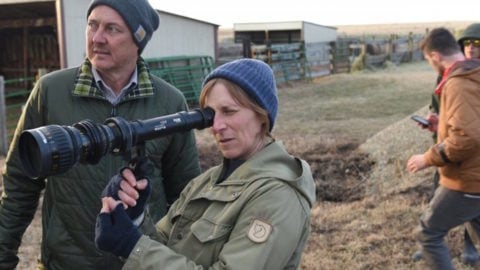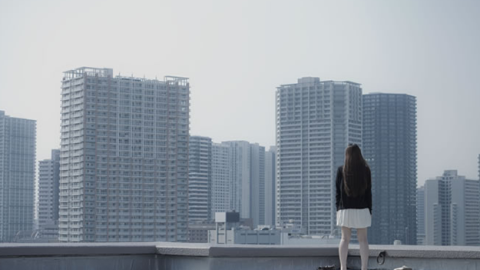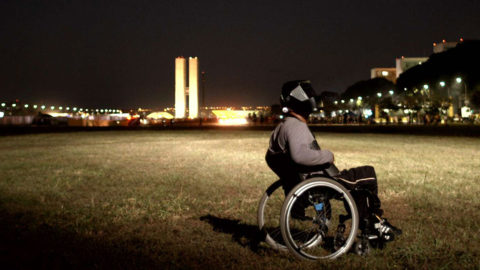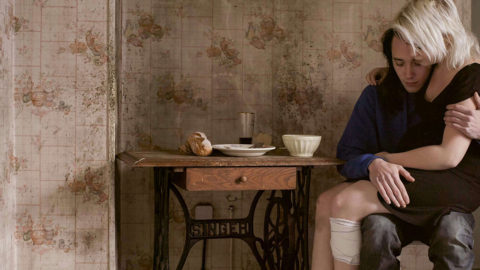Interview: Naomi Kawase
Most viewers probably know Japanese filmmaker Naomi Kawase for her fiction films, including Suzaku (1997), for which she won Camera d’Or in Cannes, and The Mourning Forest (2007), which received the festival’s Grand Prix. Kawase actually began her career making bold first-person documentaries, dedicated to the story of her own birth, her abandonment by her birth mother and subsequent adoption, and, increasingly, to such intimate, variously taboo topics as giving birth and women’s bodies. These she portrayed with consummate lyricism, exploring without eroticism but with a keen, sensual eye, and uncanny sensitivity to aging, resilience, and fragility. Throughout, Kawase put her own emotions under a microscope but one that is in the hands of an obsessive, possessed detective in search of trails, clues, and signs, that might lead her back to her family, and therefore to herself. Kawase’s early experimental films are delicate and fleeting, yet firm, unfailingly focused on the “I.”
For Film Comment I spoke with Kawase at the International Documentary Film Festival Amsterdam (IDFA), which presented at the EYE Filmmuseum a program of Kawase’s documentaries: Embracing (1992), Katatsumori (1994), and Birth/Mother (2006). 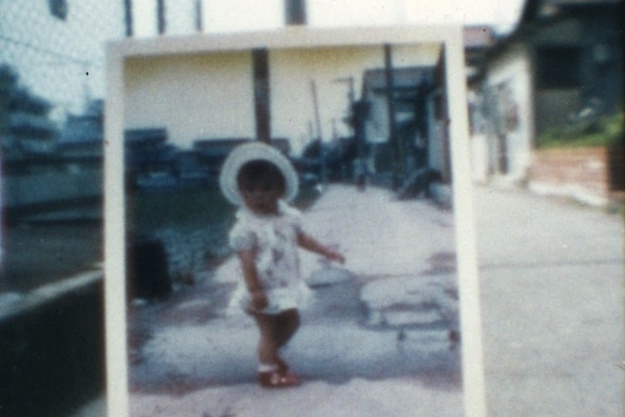
Embracing
How did you first come to documentary filmmaking?
I was actually a basketball player, till about the age of 18, but as soon as I got introduced to cinema I knew immediately that I had to have it in my life. Documenting my existence really mattered to me. The idea of documenting reality meant more than becoming a filmmaker. Even though I did attend film school.
I wonder what the landscape of Japanese documentary was like at that time.
It was comparable with what you saw in Europe, in terms of there being more didactic films, but I was not greatly concerned with that landscape. Later, I discovered directors such as Shinsuke Ogawa, and his films about the Narita Airport [known as the Narita or Sanrizuka series], or the documentaries made in protest of nuclear plants. At the beginning, though, I focused on my private reality. This led to some critical assessments at festivals such as Yamagata, where critics, primarily from the older generation, said that my films were not really documentaries. But I did not necessarily set out to deliberately go against any tradition or form.
I wonder if you identified with filmmakers such as Kazuo Hara, whose film, Extreme Private Eros (1974), is also focused on a female body.
Hara’s film is very different from mine. I would not want to compare us, because we go in very distinct directions. In his film, there are several birth scenes in which he is seen crying. In the landscape of Japanese cinema, men are often portrayed as strong, but I do find that maleness has many vulnerabilities. In Japan, women live longer, and when partners age, women take care of men. They seem to be more tuned in to emotions, while men tend to see society more objectively. Obviously I can only speak from my experience, but that’s how I feel as a woman filmmaker.
What influence did filming across different formats have on your work?
My early works were shot mostly in 16mm and on Super 8. The great thing about Super 8 is that it captures details so well. It can be very subtle in how it communicates them to the public. Digital video has it own benefits, but screening Super 8 films had to be done in a private room, with a projector. This was the only way to share my work with the audience, and it felt private and intimate, like a diary. It was an ideal format. And I don’t mean just for conveying the materiality of objects, but also capturing things you cannot see with a naked eye, the internality, feelings. Digital just feels to me a lot more objective.
How do you establish a visual language for the invisible?
Well, in film everything is naturally about vision, but I also mean the editing process. Very subtle changes, such as light, convey mood, reflect a person’s state or memory, which you would not see otherwise. I convey feelings via these visual means.
Could you speak a bit more about your editing process?
Early on, in the 1990s, while making documentaries, I carried a camera with me all the time. I had to edit from many hours of footage. More recently, I have been working solely on fiction. My frequent editor, Tina Baz, actually speaks no Japanese, but we somehow collaborate quite well. Plus, these days, I use my phone camera for some basic documentation, before shooting.
Critic Adrian Martin wrote that your documentary, Embracing, is a self-portrait, but one in which you remain hidden. How do you see your presence in your work?
Even though I was the one behind the camera, I needed to feel present in my documentaries. I am, after all, showing you what I’m seeing. Everything you see is a fraction of me. Those films are like a time machine.
Does the title of your second documentary, Katatsumori, have an English translation?
It’s not a real Japanese word. I made it up. “Katatsumuri” means a snail in Japanese. A snail has a shell, or a house, so to speak. When I was growing up, without a proper family, I felt like a snail without a home. So it’s my wordplay on two words: snail and “tsumori,” which in Japanese means, “to intend to.” In this sense, the Japanese title conveys the sense of someone who almost has a home, but at the same time is questioning what it means to have one.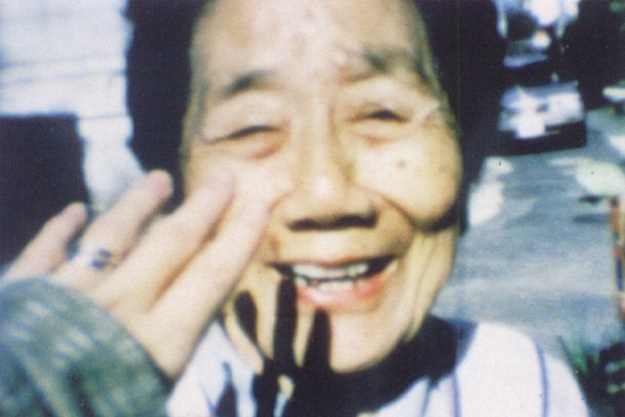
Katatsumori
Each documentary filmmaker has her own specific idea of what constitutes truthfulness. In your film, this idea comes through your aunt constantly asking why you are filming her. The camera is an intruder.
I always called my aunt who adopted me “grandma.” We weren’t actually close when I began filming, certainly not as close as it might seem. I was quite young, and was often thinking about school, but couldn’t speak with her about those things directly, since she was much older. My peers could ask their parents advice, but not me. You could say that I had a lot of pinned up frustration. We did not talk much at home. And yet, the moment I picked up the camera, I could really engage her. I could walk up to her while she was working in the garden. Katatsumori improved our ability to connect. After the film was done, I showed it to my aunt. I made a VHS tape and sent it to her, so she could watch it at the exact same time as I did, in a public screening, in Tokyo. Afterwards, I asked her what she felt about it. She said, “It’s almost as if I had always been with you.” It was very heartwarming, very rewarding, to hear that.
Years later, you made another film with your aunt that deconstructed the heartwarming feeling. It seemed to signal your maturity, as filmmaker and person.
I had become a mother myself, and this experience changed me. I experienced the birth of my son as something utterly uncontrollable, and began to project that feeling onto my surroundings, my family, and crew. I also began to ask myself what relationships should really be like. Whereas in my earlier films, I was much more focused on self-discovery.
Ela Bittencourt works as a critic and programmer in the U.S. and Brazil and is a member of the selection committee for It’s All True International Documentary Film Festival.



